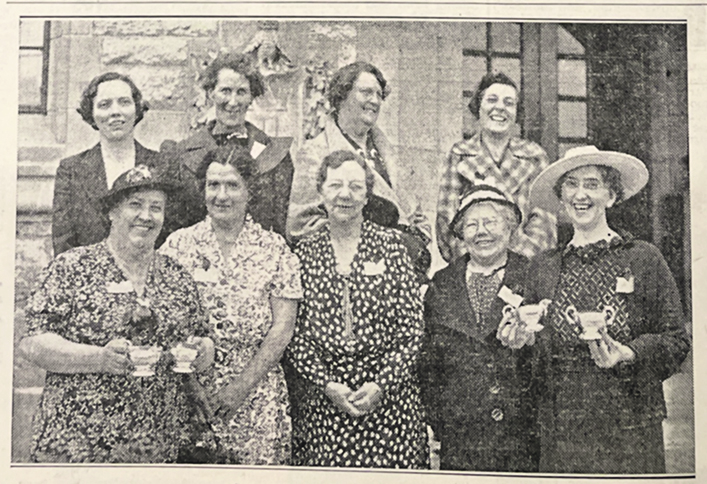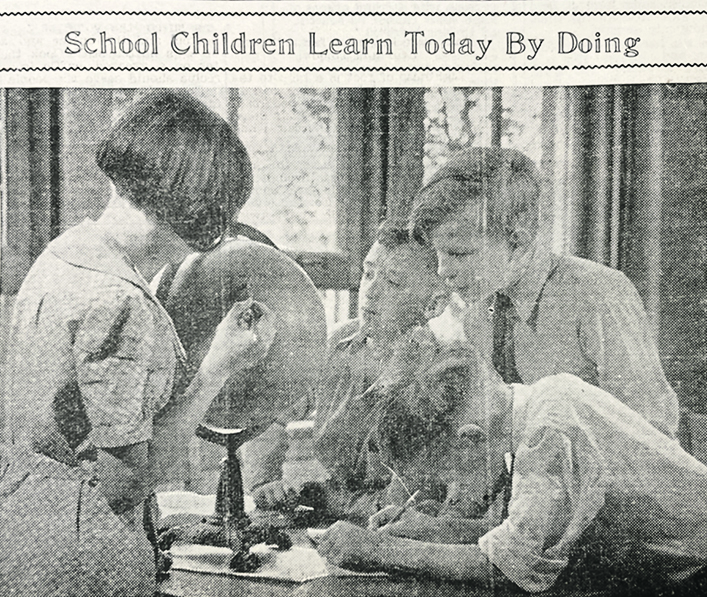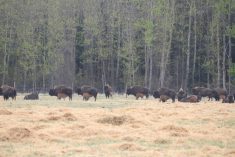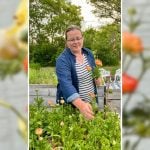In the late 1920s, crops had improved and farmers were receiving better prices by marketing their grain through the Saskatchewan Wheat Pool. The 1930s were ushered in with stock market crashes in the fall of 1929. The world-wide demand for wheat dropped, causing a drastic fall in the selling price and stockpiles of grain accumulated. At the same time, the Prairies entered almost a decade-long period of drought, grasshoppers and dust storms, thus the name Dirty Thirties.
From 1913 to 1931, the population of Saskatchewan had grown from just under 500,000 to 922,000. Most of the immigrants to the province were farmers. In 1931, 83 percent of the population was rural with over 100,000 farms and 900 villages and towns.
When the farmers came to the southern Prairies, the land was flat and covered with native grasses and low bushes, both which helped to hold the soil when the strong prairie winds blew. After plowing the grasses under and removing the shrubs, a farming cycle of planting crops and plowing removed the moisture from the soil.

During the years when there was adequate rain and snow, crops were good and the grain plants sheltered the soil. With the drought, there were little or no crops to hold the soil and few trees or shrubs to break the wind. The dry topsoil just blew away, causing black dust storms. With no crops, little feed for the animals and maybe only a small hand-watered garden, the situation for the farmers in the drought-stricken areas was devastating. Their hope and dreams were lost along with their farms.
As the drought and depression worsened in rural areas of the Prairies, almost two-thirds of the population were on relief. As their farms could no longer support their family, many farmers moved to towns and cities, to the northern areas of the province where the drought was not as severe or out of the province altogether.
The idea of planting trees around farmsteads to provide beauty and fruit for eating had long been promoted to prairie farmers. As the trees grew, the snow would collect in them, providing moisture to the land and melt water to fill dough-outs and reservoirs. Planting trees in rows around fields and farm sites became one solution for breaking the wind, stopping the soil erosion and retaining moisture.
In a Jan. 23, 1930, article by James McLean, superintendent of the Forestry Nursery in Sutherland, Sask., he recommended that a farm shelter belt should be planted on well-cultivated land.
“The longer land has been well farmed, the better it is for planting trees on.”
During the 1920s and before, rural women saw their need to socialize and work with other women. The Saskatchewan Homemakers’ Club was formed in 1911 in Regina with the stated objective of “the promotion of the interests of the home and community”. It was a non-partisan and non-sectarian body that provided community leadership in the areas of health, education and recreation.

The United Farm Women (UFW) was another active women’s organization during this time. They promoted the principles of co-operation and the formation of co-operatives to give farmers control over the marketing of their produce.
In The Western Producer, the UFW and the Homemaker’s Cubs regularly reported on their activities and concerns. These reports became a way to encourage and support other rural women. The local groups put a great deal of effort into working for improvements in education and the establishment of community libraries; health care in general but specifically maternal, infant and child health; and organizing and supporting improvements in their communities. In the later Thirties both organizations held a Womens’ Week at the University of Saskatchewan. These were promoted as a holiday for the women, a time to leave their worries and responsibilities behind and come and learn and socialize with other women.
A summary of homemakers’ reports from Aug. 11, 1938, highlighted visits to district meetings where a great variety of handcrafts and sewing projects were displayed and often demonstrated. The number of Homemakers’ Clubs had grown in the Carrot River district, so a new Nipawin district had been organized. The new district had 14 clubs and 210 attended a day long convention. At the Turtleford meeting, several interesting topics were discussed, including the pros and cons of the larger unit of school administration, diets for school children and the need for more discriminating use of the radio. Groups were urged to put more effort into the establishment of libraries and to organize reading groups among members.
To encourage reading, Violet McNaughton started a “Book Shelf” corner in The Western Producer. In the Jan. 3, 1930, issue readers were invited to share what books they were reading that winter. McNaughton proposed that reading circles might be a new form of winter recreation and study. She mentioned rural readers had access to the Open Shelf Library, the travelling libraries, their community library and the Saskatchewan Wheat Pool Library in Regina.

When Lady Tweedsmuir, the wife of Lord Tweedsmuir, governor-general of Canada from 1936-40, visited Western Canada in 1937, she decided that something should be done to provide more food for the mind and body in the drought areas and promptly set to work to gather books for community libraries. She contributed many books herself and invited others, from around the world, to gather books. The Carnegie Foundation gave her a grant to purchase good modern books.
She had gathered, sorted and shipped 15,000 volumes from Rideau Hall, stated McNaughton in her Feb. 24, 1938, column. The books were to be distributed through Homemakers’ Clubs and lent to anyone in the community.
Rural women found social, emotional and spiritual support through other community groups such as social and sewing circles, cultural, garden and school clubs, Ladies’ Aids, Catholic Women’s Leagues and the Red Cross. The women also recognized a desperate need for activities for their children.

The University of Saskatchewan Extension Service had recognized the need for information and educational opportunities for the rural citizens of the province. In 1913, Abigail DeLury was appointed the director of women’s work and supervisor of Homemakers’ Clubs. Her work extended beyond the clubs to rural women and to women in other organizations. She wrote bulletins, organized conventions, conducted short courses and attended Homemakers’ meetings. One of her most popular booklets was “Food for The Family” that could be obtained free from the University of Saskatchewan. In a September 1931 issue of The Western Producer, Miss DeLury had a series of columns on “Preserving Vegetables for Winter Use” that included up-to-date canning methods.
To support the rural boys and girls, the University Extension Service sponsored Boys’ and Girls’ clubs that focused on livestock and gardening. The Depression restricted what so many girls and young women could do so Farm Girls’ Camps, Home Craft Clubs and three-day sewing courses were organized. In 1936 the Saskatchewan Wheat Pool provided funds for the full-time appointment of Edith Rowles, a home economist, as supervisor of girls’ work to oversee these camps and clubs.
In February 1938, Mrs. Haight, writer of the Garden Page, suggested that clubs in the more fortunate areas might be willing to collect garden seeds to be sent to the clubs in the drought-stricken areas. As of March 24,1938, the paper had received far more requests for seeds than donations. A column later in the spring shared the great appreciation of those who had received seeds. A similar project was held the following year. This is a prime example of how rural women supported and encouraged each other through this difficult time.
















